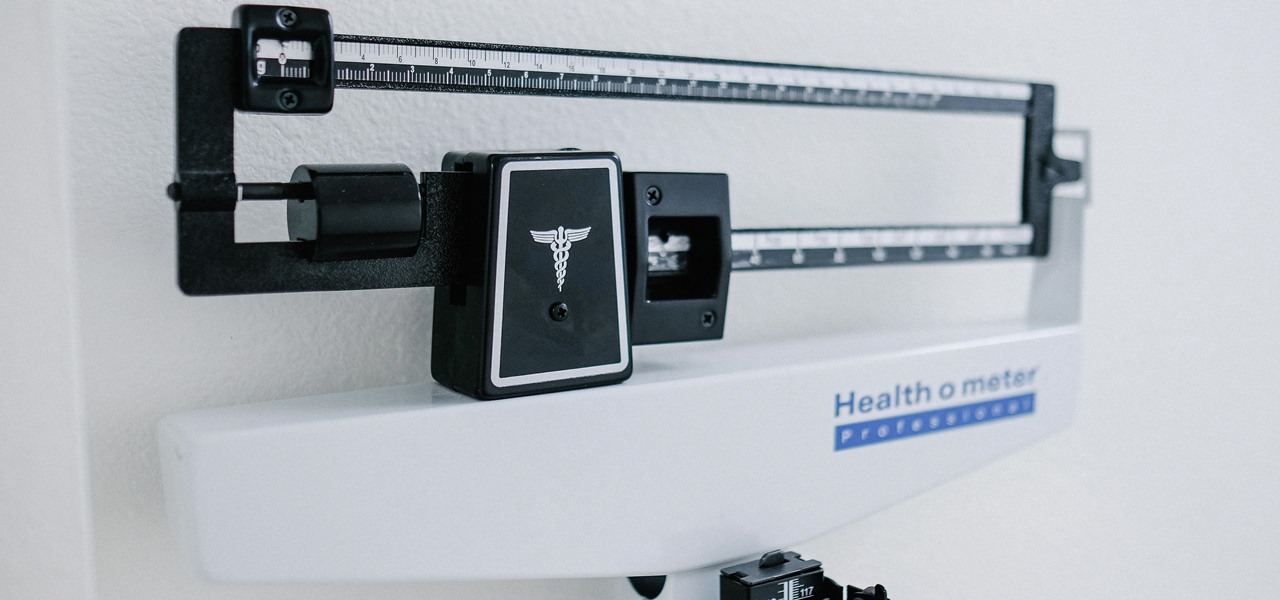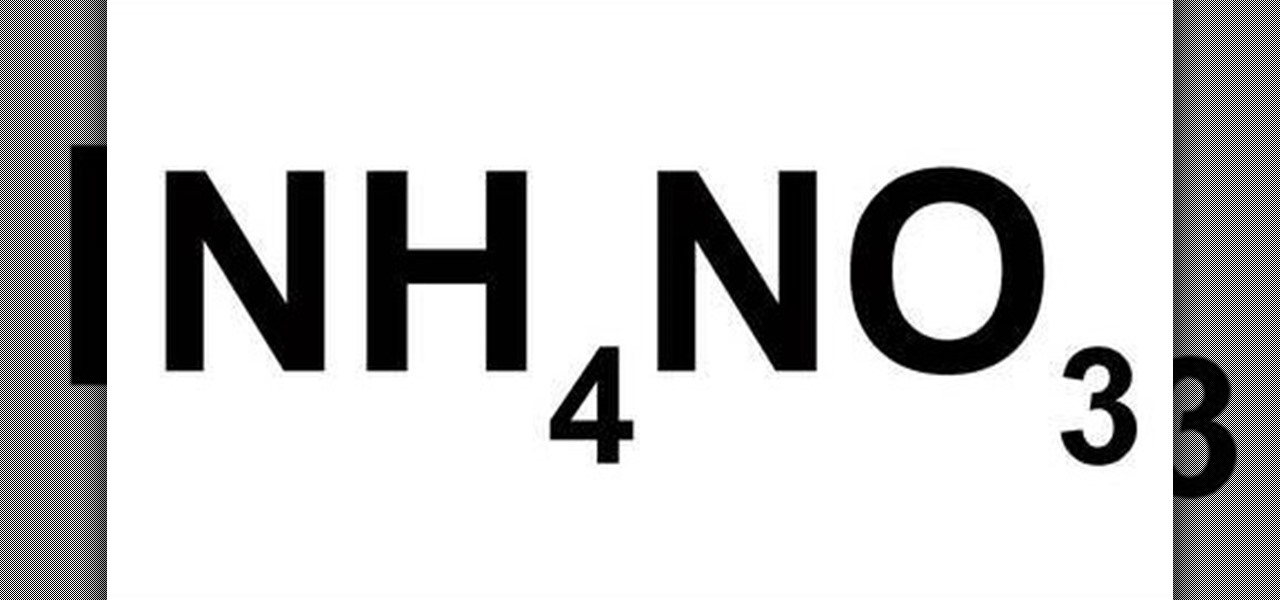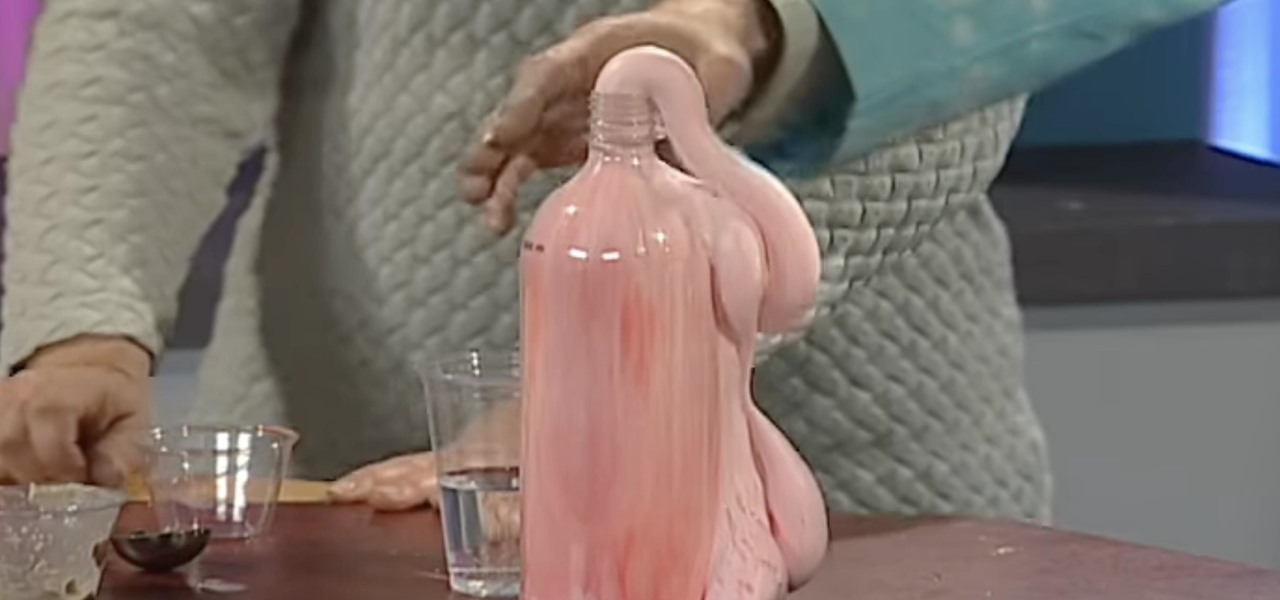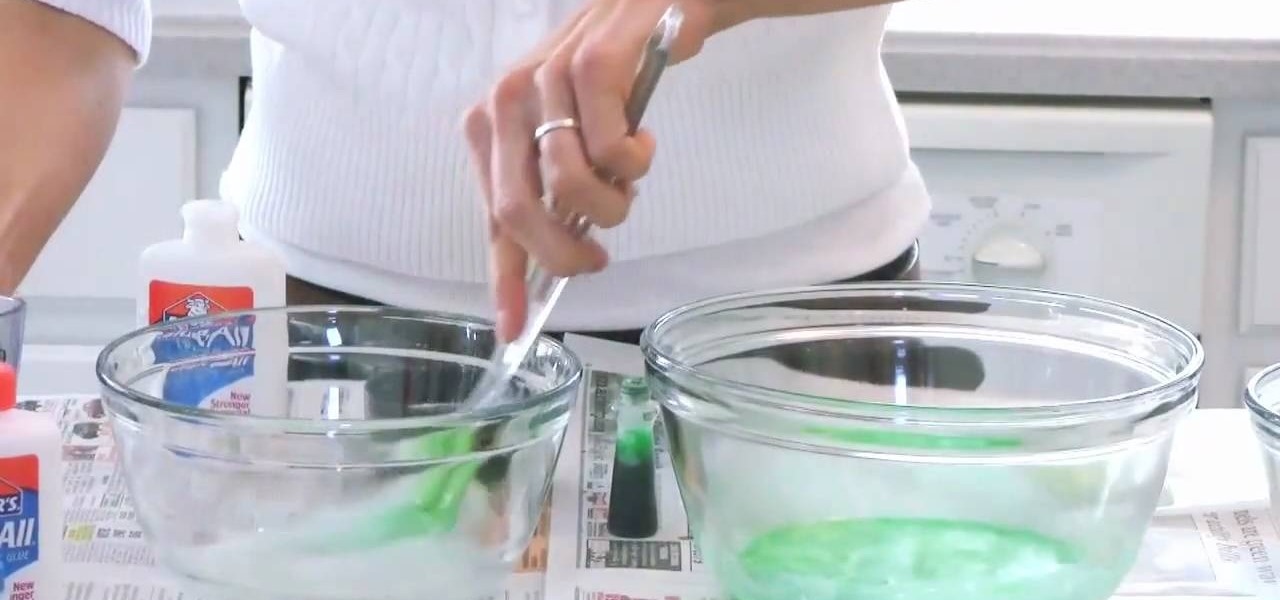Hot Science Experiments Posts


How To: Make lightning with a spoon and a balloon
In this video, we learn how to make lightning with a spoon and a balloon. First, you will need to gather a spoon and a balloon. Once you have these, blow up the balloon then tie it on the end so it's sealed. After this, rub the balloon on your hair and then slowly move the spoon towards the balloon. Turn the lights out and watch what happens. You will see sparks of electricity start to appear between the balloon and the spoon! This is great to do with children or as a quick experiment to show...
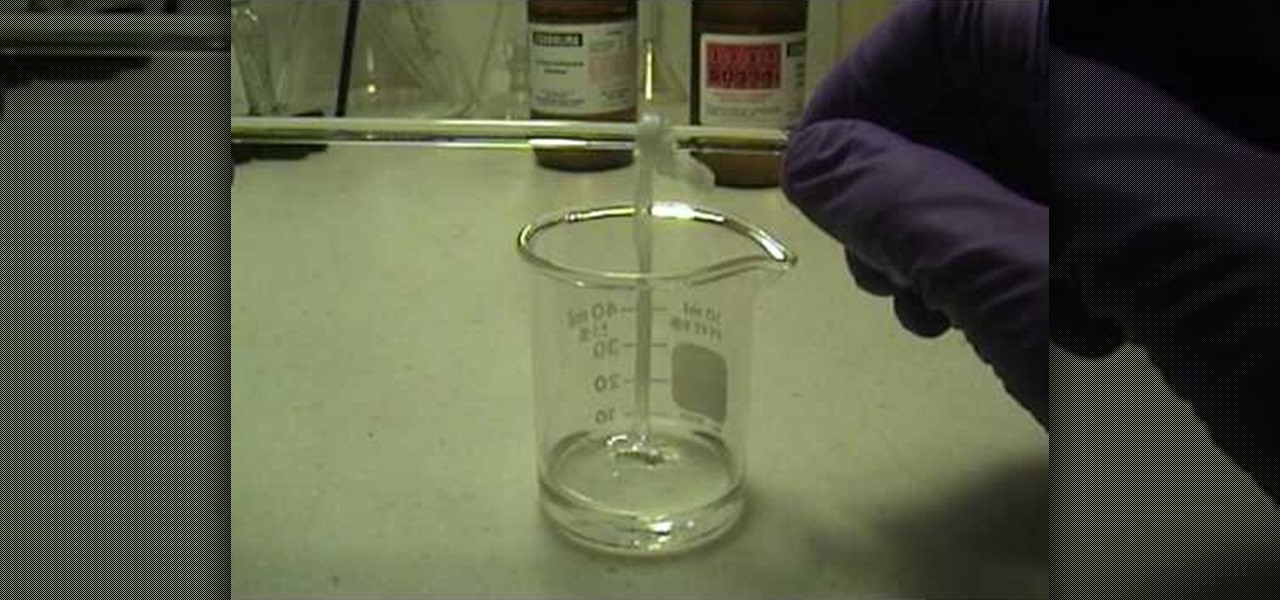
How To: Make your own nylon
In this tutorial, we learn how to make your own nylon. You will need: pipettes, pipette filler, forceps, beaker, stir rod, sebacoyl chloride and hexanediame solution. Now, pour some of the hexanediame solution into the small beaker. Add in a food coloring if you want to make this a specific color. After this, add in 4 cc's of sebacoyl chloride and carefully drip into the side of the beaker. You should see a layer of where the two liquids are after this. Now, take your tweezers and reach into ...
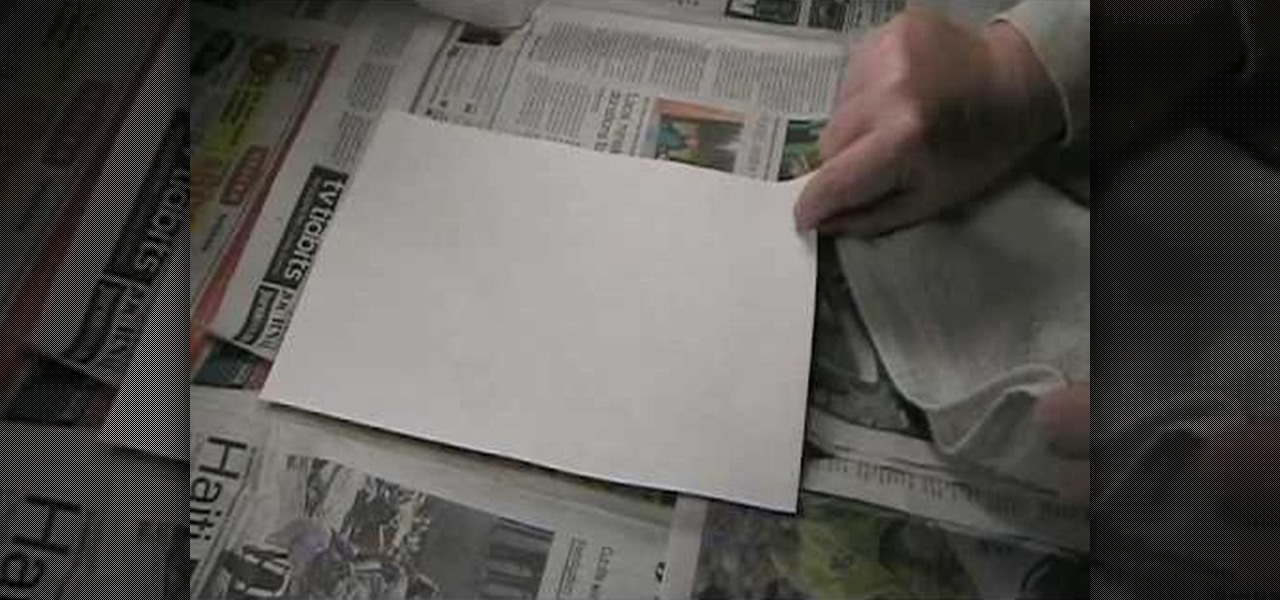
How To: Use ninhydrin to reveal latent prints on paper
In this tutorial, we learn how to use ninhydrin to reveal latent prints on paper. This will work out because you will be spraying a special liquid onto the porous area. After this, you will turn on a black light and then be able to see the fingerprints appear in purple! Be careful with the solution, because it's flammable! This will also stain your skin, so make sure you wear gloves and don't let it contact a surface you don't want stained. To mix the solution, you will combine both of the so...
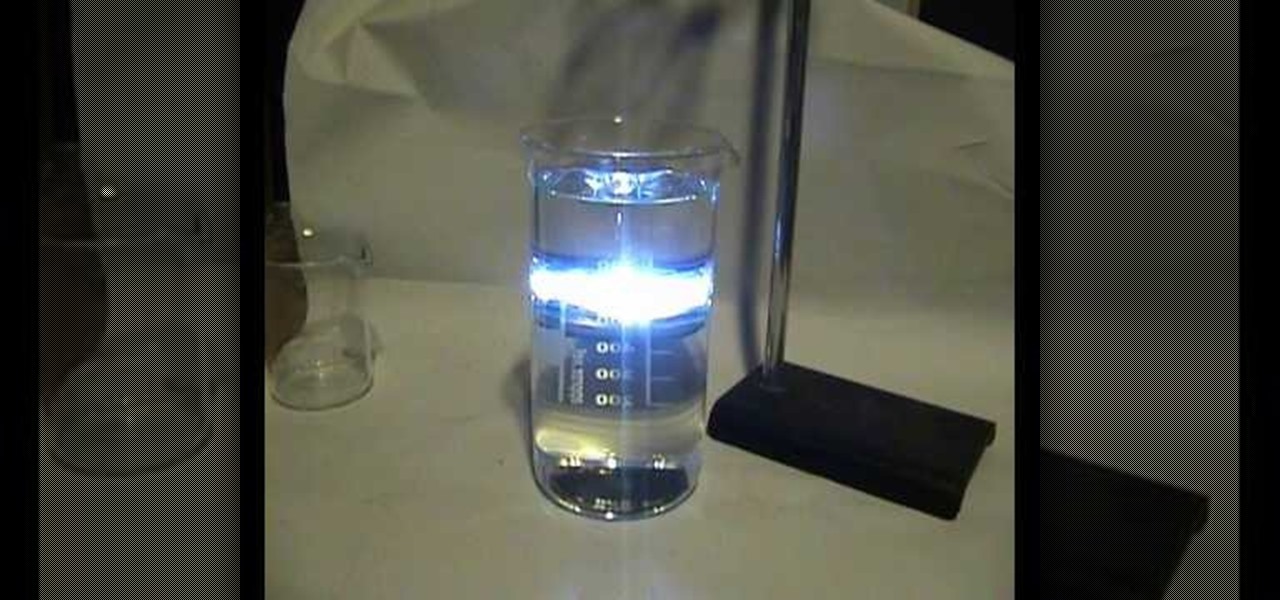
How To: Explain why the sky is blue through chemistry
Want to know why the sky is blue during the daytime and red during the evening and morning? A simple experiment is all that is needed.
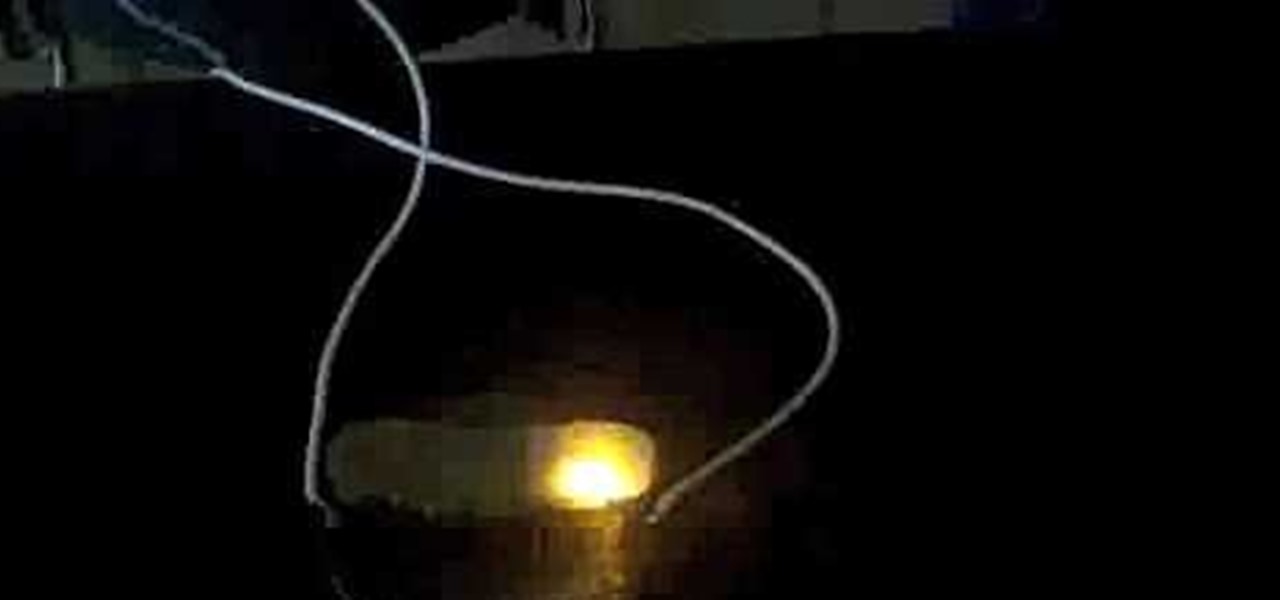
How To: Make a light bulb from a pickle
In this Education video tutorial you will learn how to make a light bulb from a pickle. Pickles are high in ions in the form of acids and salts. These are electrolytes and they will transfer energy through the pickle. Place a pickle on a glass plate and hook it up with an AC power cord with a nail on each end as shown in the video. You must have protective gloves on. Poke the nails on each end of the pickle and hook up the cord to the power source. The pickle will start emitting light which i...

How To: Make verdigris with copper and vinegar
In this tutorial, we learn how to make verdigris with copper and vinegar. Verdigris is a compound of copper that is blue and powder. You will need: copper metal, vinegar, a big jug, and a small beaker. Now, place the small beaker inside of the jar, then fill the bottom with vinegar. Next, put the piece of copper metal inside of the jar making sure it sits inside the small beaker. Seal this and put it in a safe and dry place. Leave it for a good month, then when you come back you will have a n...
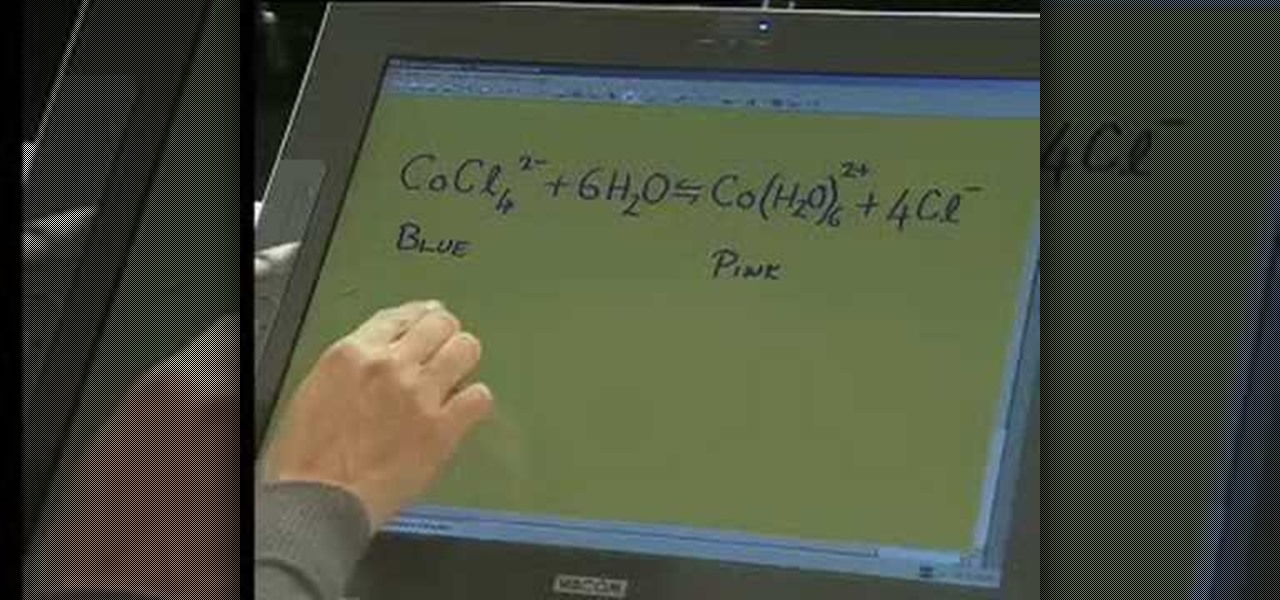
How To: Understand chemistry & chemical equilibrium
A video which shows a reaction in which cobalt chloride reacts with water to form a hydrated form of cobalt and chloride ions.
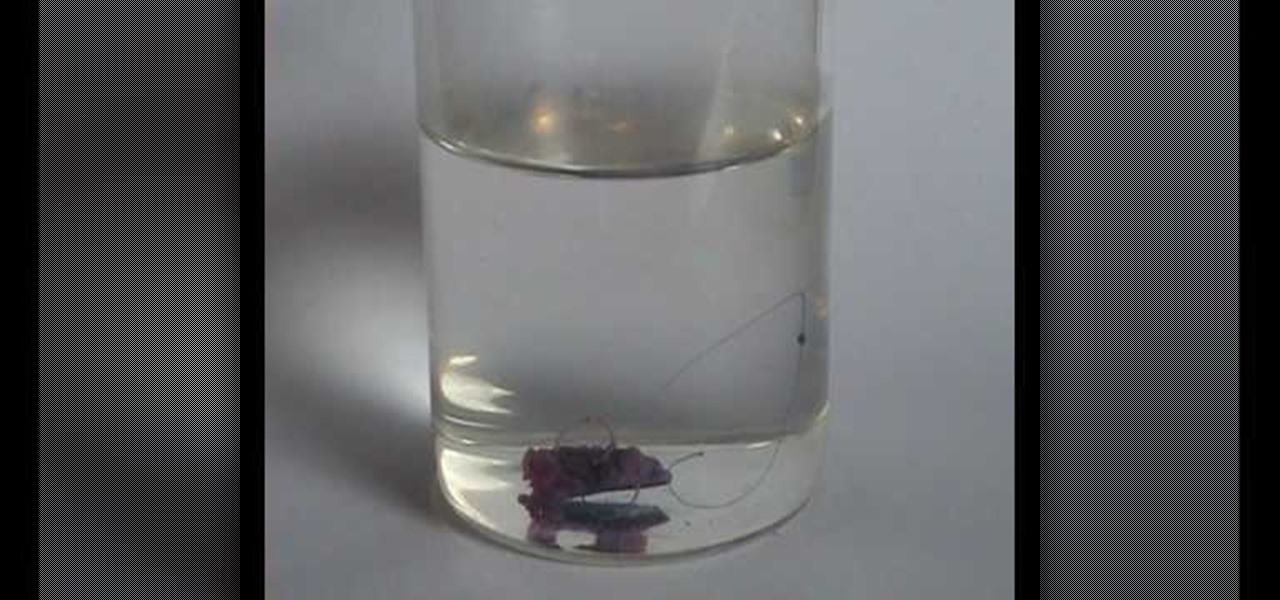
How To: Make silicate salt
In this tutorial, we learn how to make silicate salt. First, you will need to add sodium silicate with boiling water. Keep adding the sodium and then stirring in small amounts until it is completely dissolved. Then, allow the mixture to cool off and add in nickel chloride. You will now start to see a spongy green mixture coming from the chloride which is the nickel chloride reacting with the sodium. Do this again with cobalt chloride and watch the crystals start to form. Watch these grow and ...
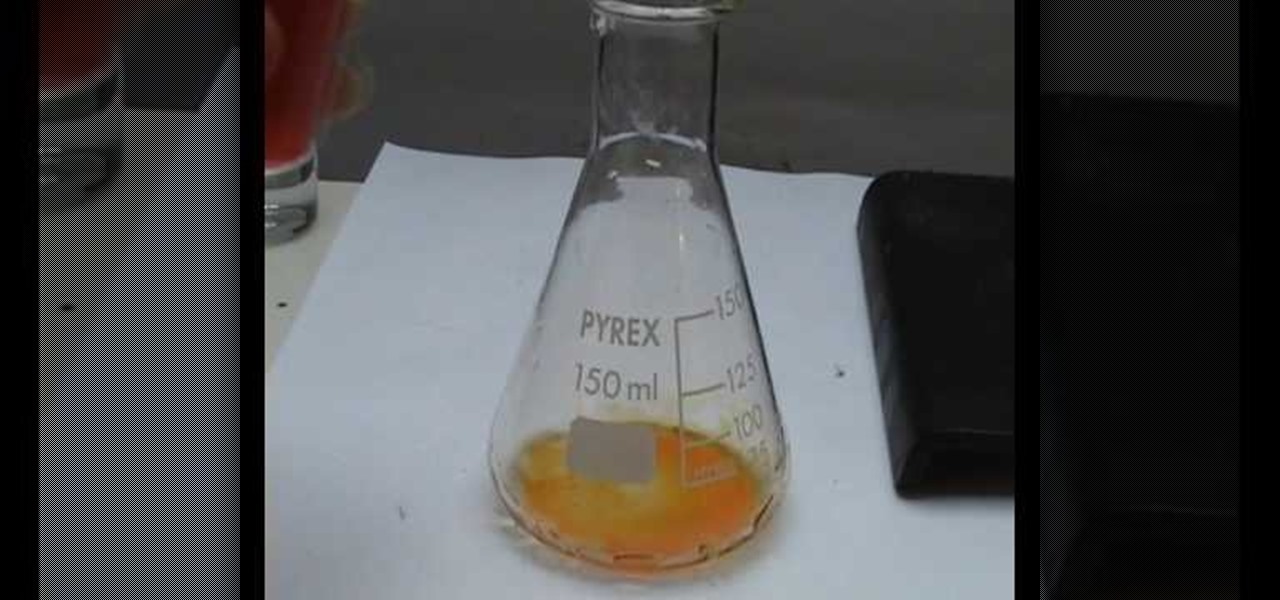
How To: Make a chemical indicator from kitchen items
In this tutorial, we learn how to make a chemical indicator from kitchen items. First, make an indicator by grabbing some red cabbage and some vodka. Now, heat up some water until it's boiling, then place a smaller beaker inside the water with vodka inside of it. Place the red cabbage inside of the smaller beaker, then stir it up and let sit for 10 minutes. A lot of the color will come out with the cabbage being inside of the alcohol. After this, pour this into a storage bottle and pour the w...
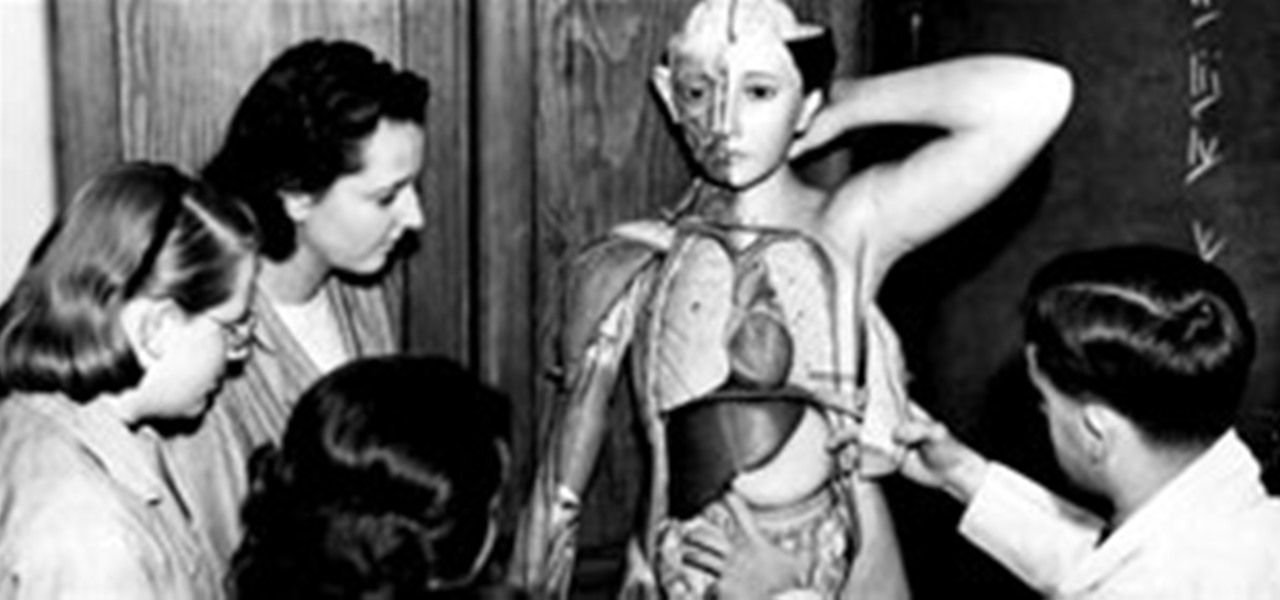
News: Old School Science Models
LIFE magazine has posted a gallery of bizarrely wonderful old school scientific models. Don't miss the giant fetus or massive colon (double ew). Behold, science education before computers ruled our world.
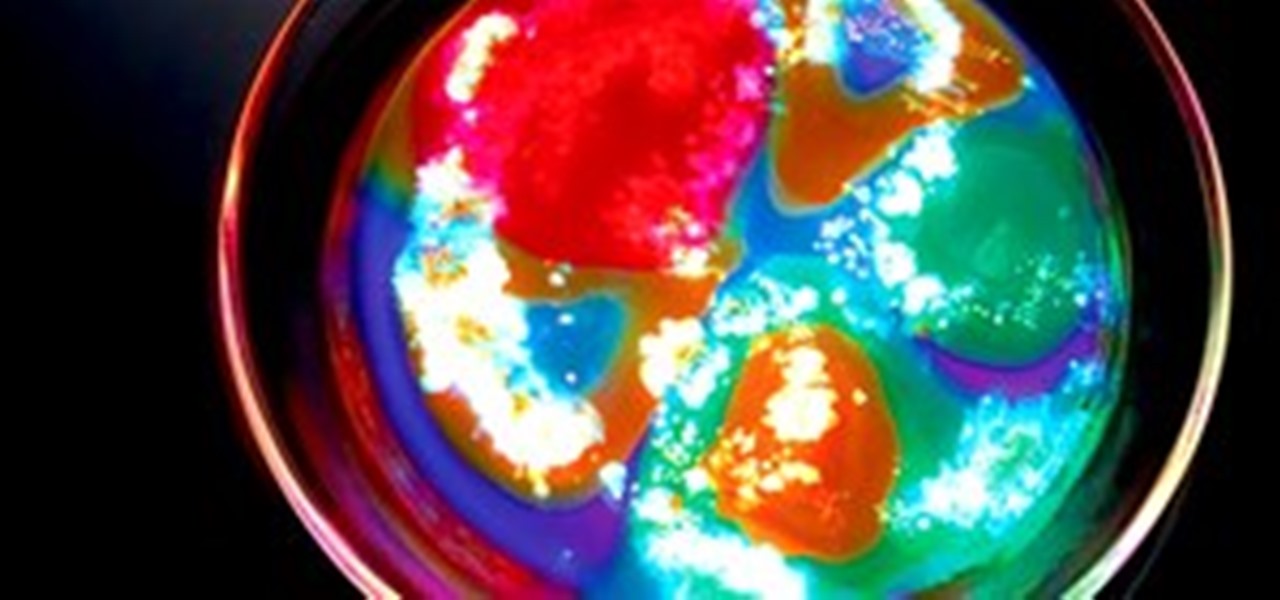
HowTo: Hack Light
PopSci's Gray Matter explains how to "hack light", a simple project that calls for glow sticks, diagonal cutters and Drano. Here's the science behind it:
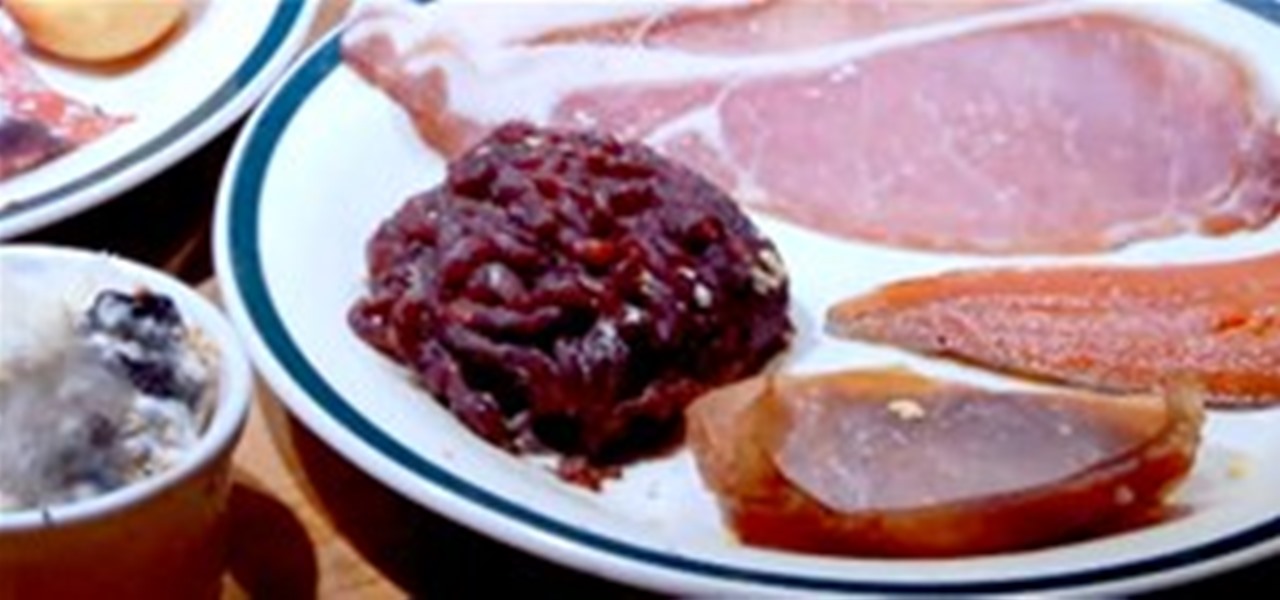
News: 13 Gloriously Disgusting, Maggot Filled Days of Rotting Food
Have you ever wondered what the decomposition of rotting food looks like? Probably not... but now you do. Below: 13 days of time-lapsed, maggot filled rot. Be prepared. You might be inclined to skip lunch today. Other gems by Bang Goes The Theory:

How To: Start a green environmental initiative at school that looks good for college
Starting a green initiative at your school is a great way to help the environment and looks great on your college applications too. Watch this video for tips on starting any type of green initiative at your school, from recycling to cleaning shorebirds.

How To: Combine cations, anions, and energy to make ionic compounds
Studying chemistry is a complex but potentially lucrative activity. If you're studying ionic compounds and need some help understanding how they work, look no further. THis video will explain how the two types of ions: anions and cations, and energy combine to create an ionic compound.

News: Jane Goodall Was a Babe (and One of History's Greatest Conservationists)
National Geographic recently published a retrospective of the lovely Jane Goodall, one of the world's most accomplished conservationists. The feature includes every image of Goodall to ever appear in the magazine for the past fifty years.
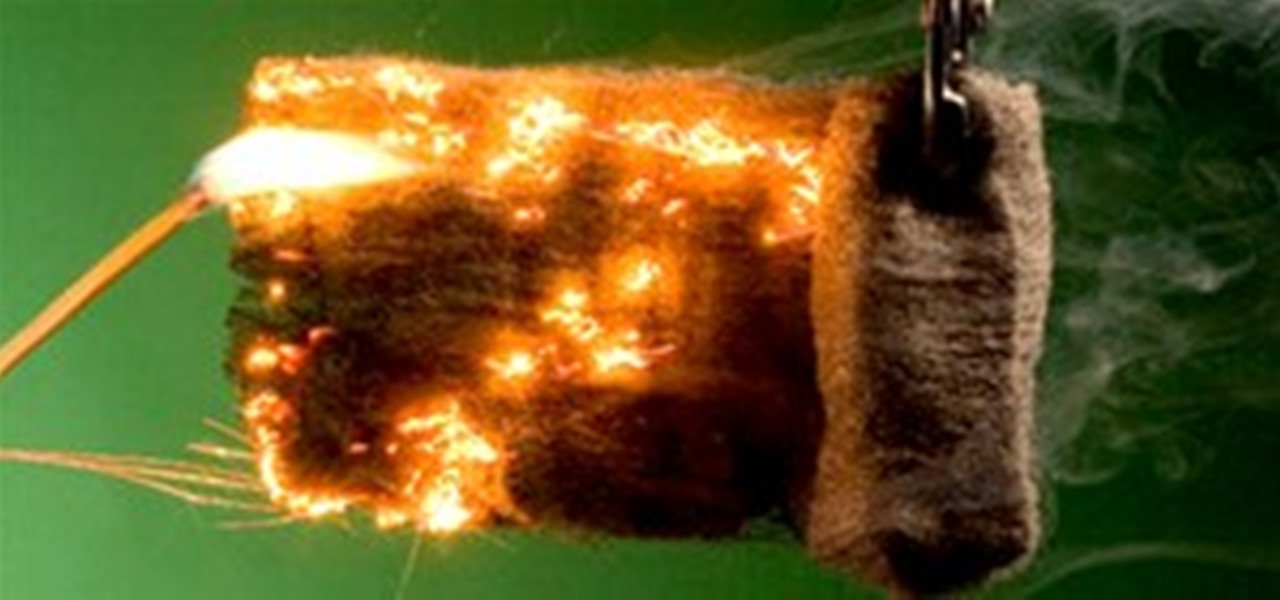
News: Metal Isn't Flammable... Right?
Theo Gray of Gray Matter explains the principle behind sending steel up in flames- as long as it's steel wool, of course. The process is beyond simple. Spend 2 bucks and 2 minutes: purchase a steel wool pad, hold in pliers, light with a match. But the question is, why is steel wool flammable, while other forms of metal are not? Explanation below the video. Theo says:

News: Look! A Diamond the Size of the Moon!
Lucy, whose real name is BPM 37093, is a diamond roughly the size of our moon. At around 4000 kilometers in diameter (2,485 miles), Lucy is estimated to be around 10 billion trillion trillion carats. A billion trillion trillion? x 10? It's easier to imagine dividing by zero than to put this ridiculous number into perspective.

News: Cheeseburger Dipped in Acid (Plus: Why You Should Fear McDonald's)
Ok, so first Periodic Tables demonstrates how a McDonald's cheeseburger breaks down in your stomach during the digestion process. Everybody has hydrochloric acid in their stomach, so drop a burger in acid and you can see it happen before your eyes (minus the amino acids a human stomach would supply). Seems innocent enough. Here's what happened after 3.5 hours: NASTY. So my question is: does healthy food look the same? What would a pile of broccoli or granola look like? Probably just as nasty....
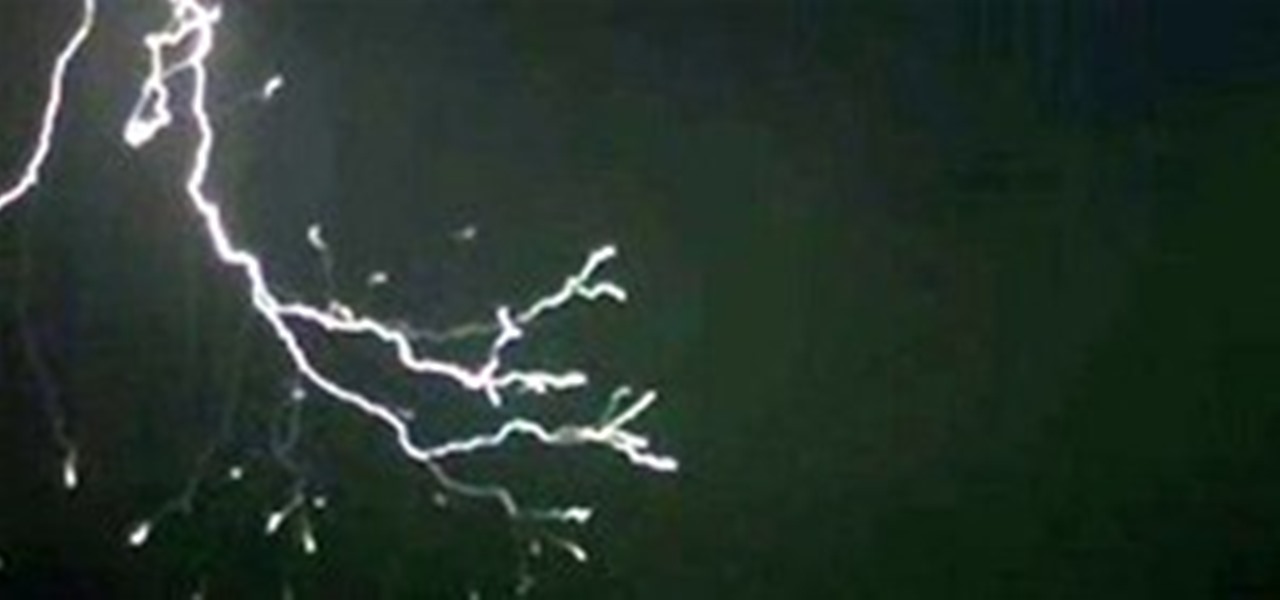
News: Super Slo-Mo Lightning Looks Like Mother Earth's Fireworks Show
Mother Earth, God, Buddha, the Universe, energy fields... whatever you call it, lightning slo-mo'ed looks like some higher being set off some major fireworks. Beautiful. Two videos in the gallery below.
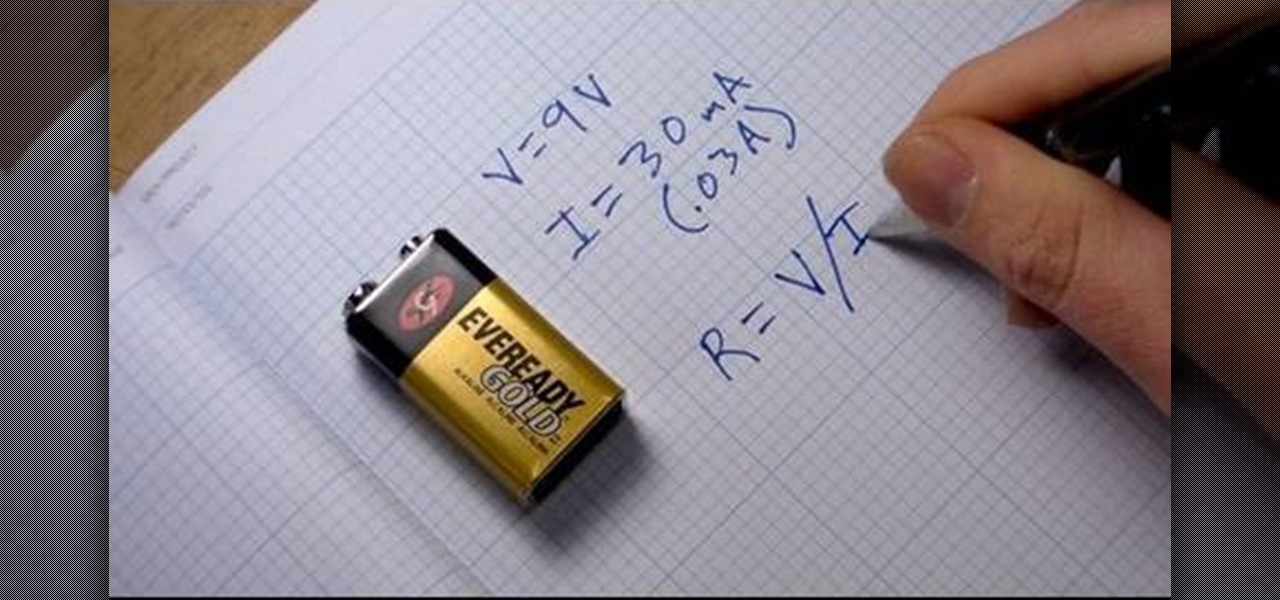
How To: Understand Ohm's Law
This video teaches the basics of Ohm's law, which is an important equation in electrical engineering. The three variables which are used in this equation are V, which stands for voltage, I for current, and R for resistance. The equation for the law itself is I=V/R. This law defines the relationship between these three very important electrical properties. The host of the video further explains what voltage, current, and resistance are and how they work in relation to an electrical current. Gi...
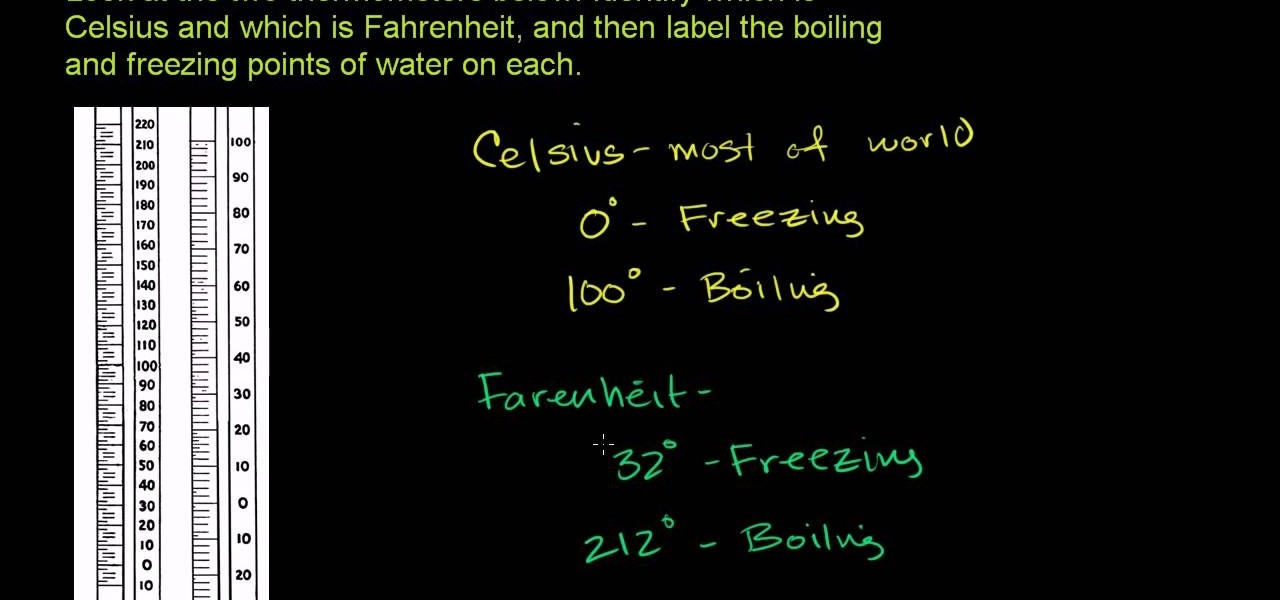
How To: Differentiate between Celsius and Fahrenheit temperature scales
In this free video science lesson from Internet pedagogical superstar Salman Khan, you'll learn how to differentiate between Celsius and Fahrenheit scales, identifying the freezing and boilings points of each. Whether you need help studying for that next big test or could just use a hand finishing your homework, you're sure to be well served by this video lesson. For more information, including detailed, step-by-step instructions, take a look.
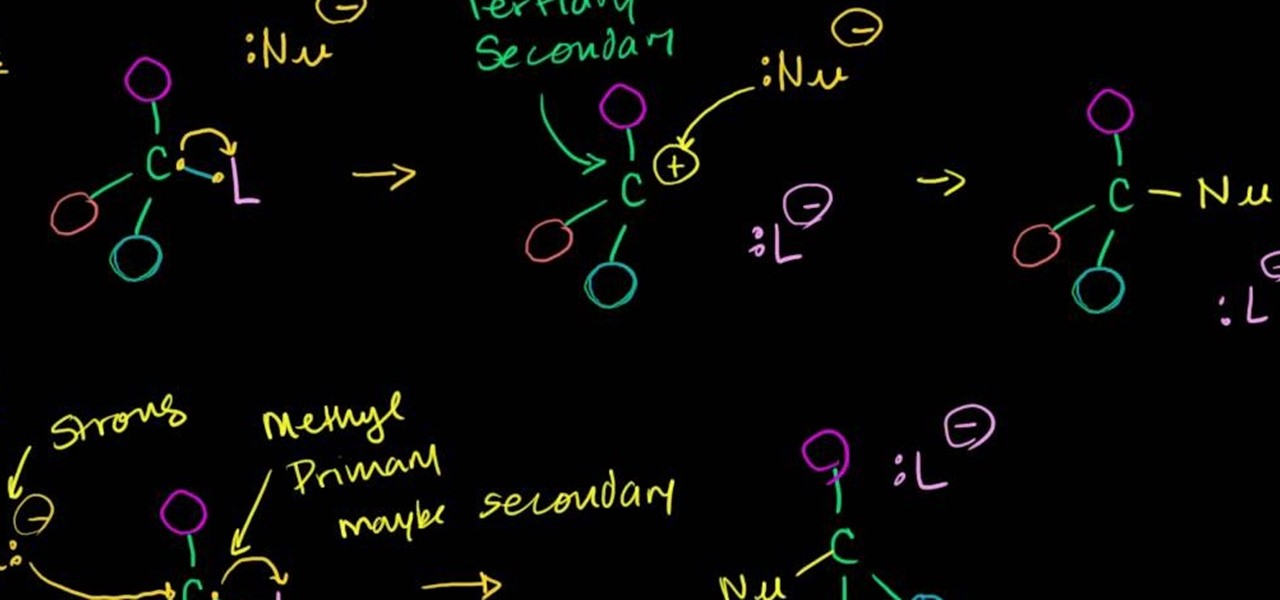
How To: Solve SN1 & SN2 reaction problems that involve solvents in organic chemistry
In this free video science lesson from Internet pedagogical superstar Salman Khan, you'll learn how to undertstand the effects of solvents on SN1 and SN2 reactions. Whether you need help studying for that next big test or could just use a hand finishing your homework, you're sure to be well served by this video lesson. For more information, including detailed, step-by-step instructions, take a look.
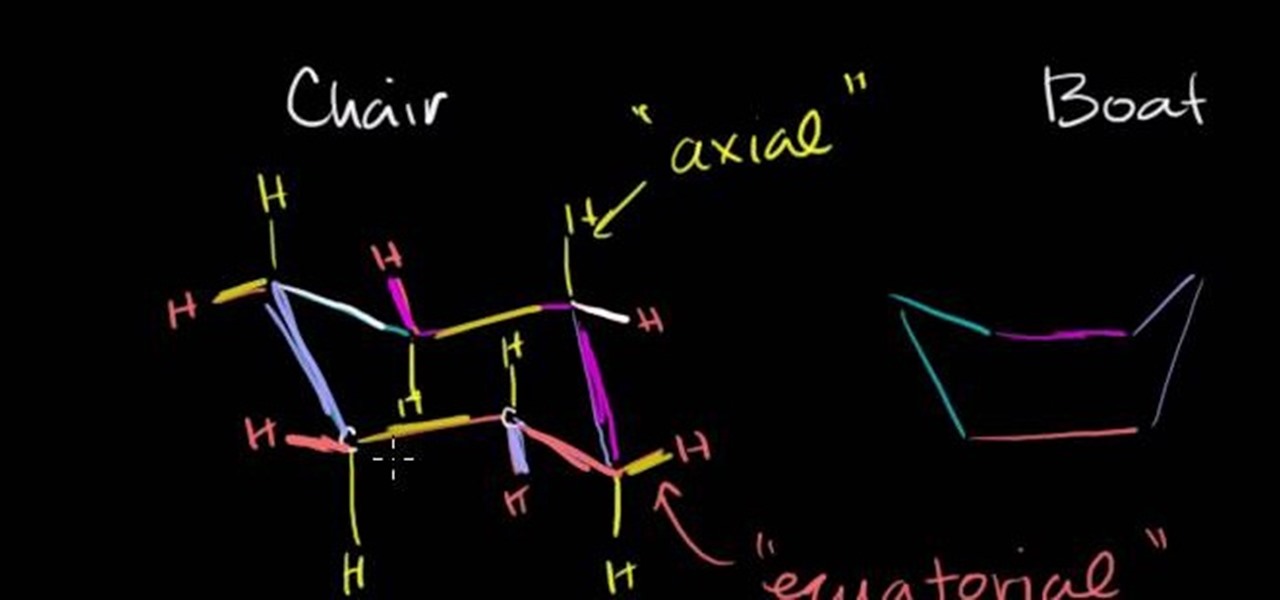
How To: Visualize a cyclohexane molecule with chair & boat shapes in organic chemistry
In this free video science lesson from Internet pedagogical superstar Salman Khan, you'll learn how to represent and interpret cyclohexane molecules in organic chemistry. Whether you need help studying for that next big test or could just use a hand finishing your homework, you're sure to be well served by this video lesson. For more information, including detailed, step-by-step instructions, take a look.
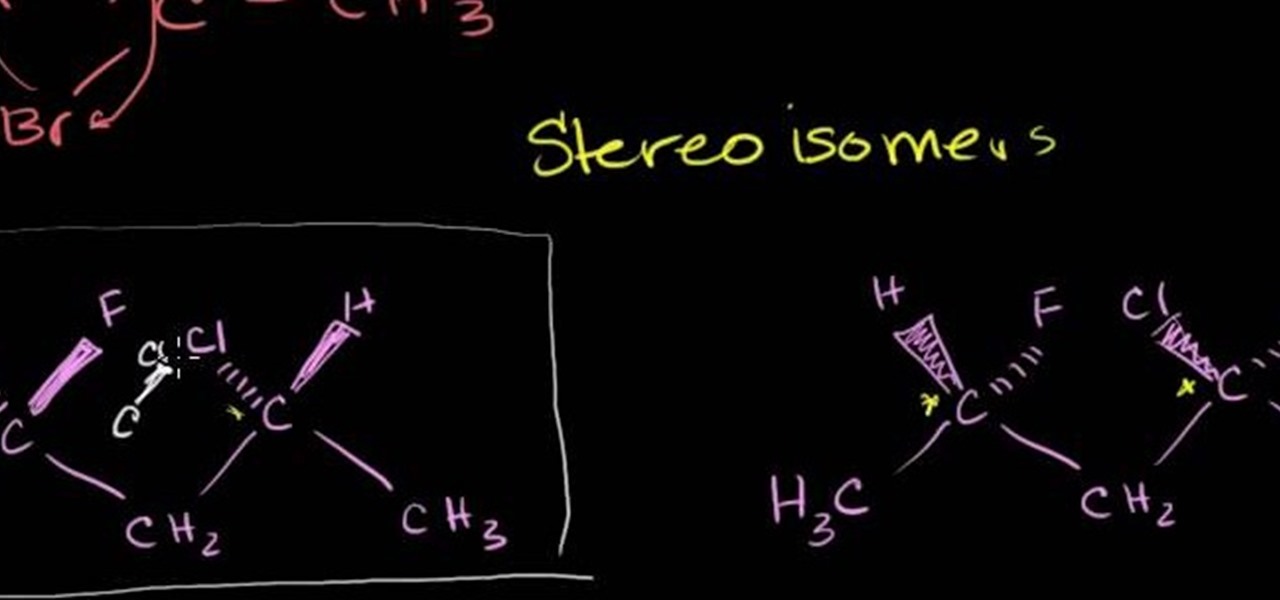
How To: Work with stereoisomers, enantiomers and diastereomers in organic chemistry
In this free video science lesson from Internet pedagogical superstar Salman Khan, you'll learn how to work with stereoisomers, enantiomers, diastereomers, constitutional isomers and meso compounds in organic chemistry. Whether you need help studying for that next big test or could just use a hand finishing your homework, you're sure to be well served by this video lesson. For more information, including detailed, step-by-step instructions, take a look.

How To: Deal with SN2 (biomolecular nucleophilic substitution) reactions in chemistry
In this free video science lesson from Internet pedagogical superstar Salman Khan, you'll learn how to understand and work with SN2 reactions in organic chemistry. Whether you need help studying for that next big test or could just use a hand finishing your homework, you're sure to be well served by this video lesson. For more information, including detailed, step-by-step instructions, take a look.
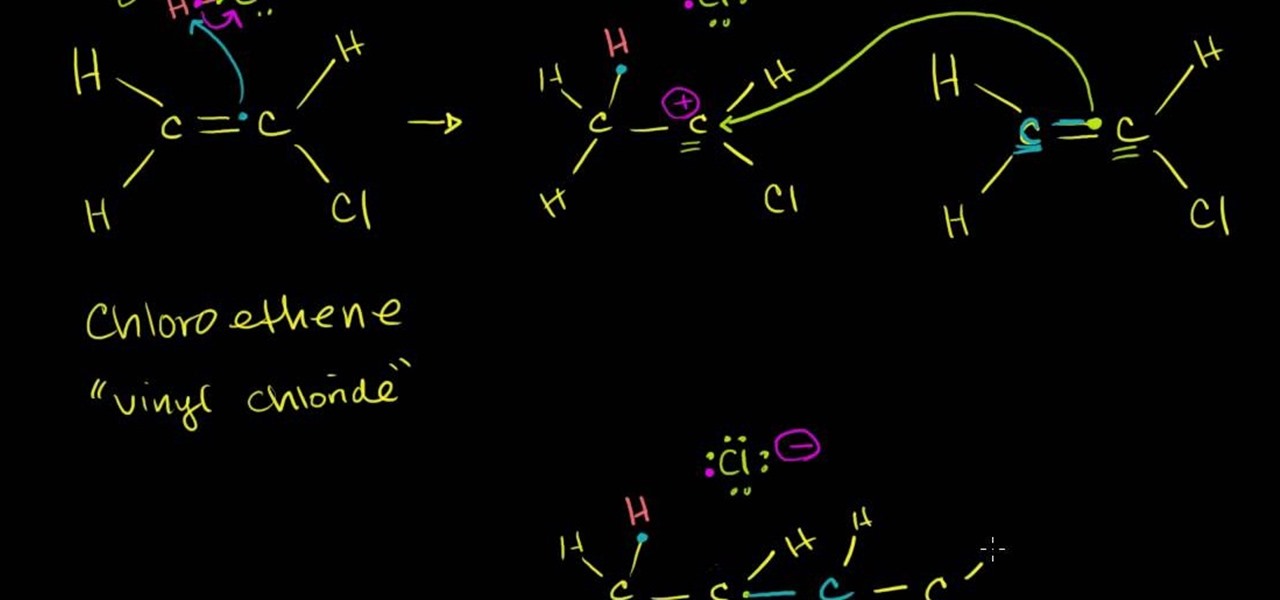
How To: Polymerize an alkenes with an acid in organic chemistry
In this free video science lesson from Internet pedagogical superstar Salman Khan, you'll learn how to handle the polymerization of an alkene with an acid in organic chemistry. Whether you need help studying for that next big test or could just use a hand finishing your homework, you're sure to be well served by this video lesson. For more information, including detailed, step-by-step instructions, take a look.
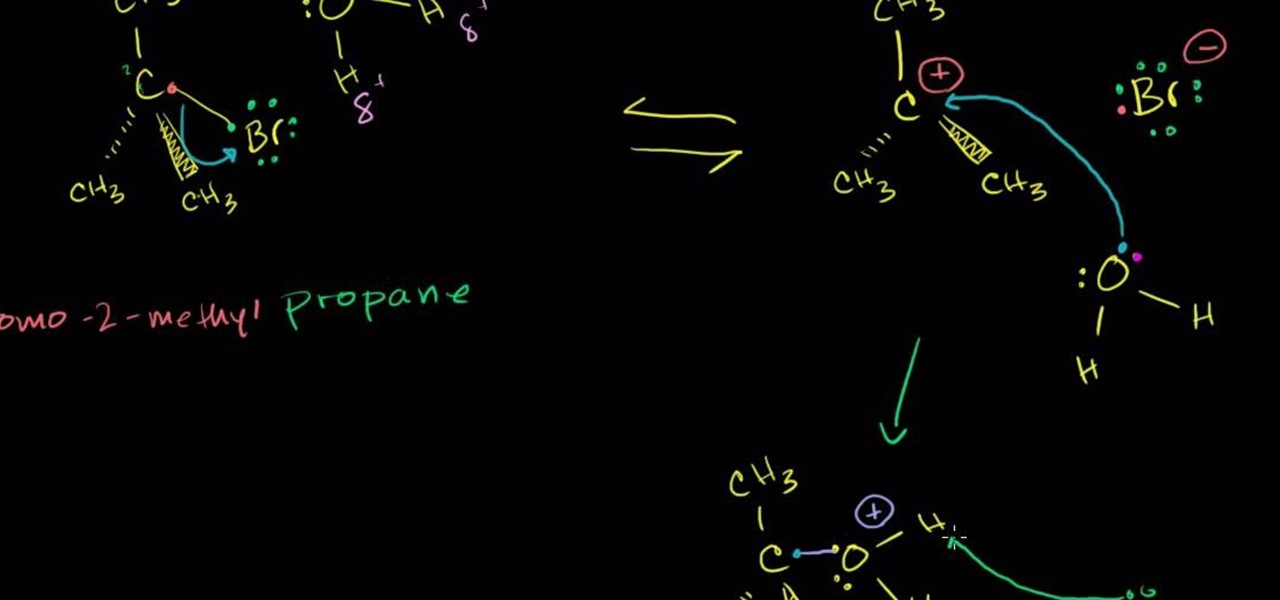
How To: Work with substitution or SN1 reactions in organic chemistry
In this free video science lesson from Internet pedagogical superstar Salman Khan, you'll learn how to handle SN1 reactions in organic chemistry. Whether you need help studying for that next big test or could just use a hand finishing your homework, you're sure to be well served by this video lesson. For more information, including detailed, step-by-step instructions, take a look.
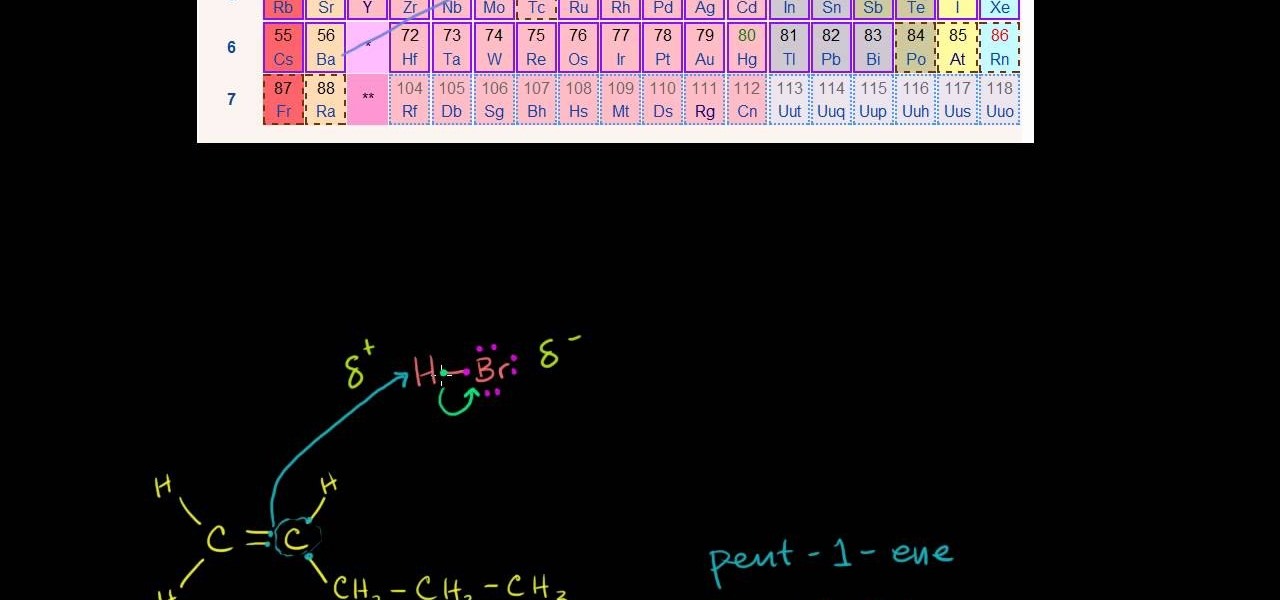
How To: Work with reaction mechanisms in organic chemistry
In this free video science lesson from Internet pedagogical superstar Salman Khan, you'll learn how to handle reaction mechanisms in organic chemistry. Whether you need help studying for that next big test or could just use a hand finishing your homework, you're sure to be well served by this video lesson. For more information, including detailed, step-by-step instructions, take a look.
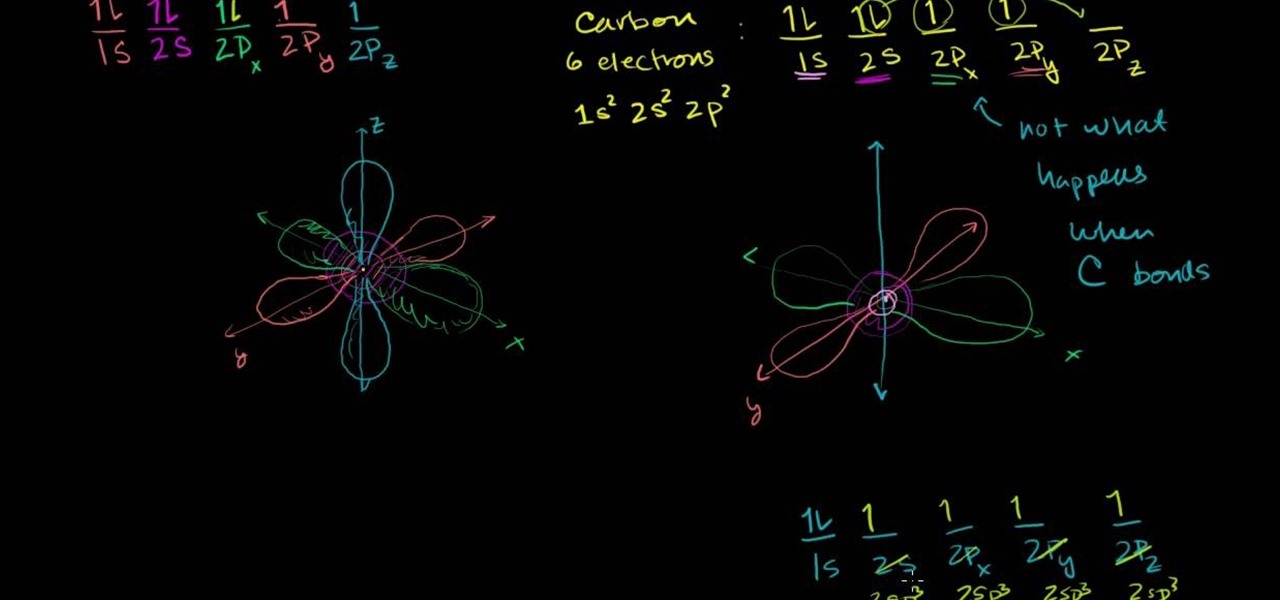
How To: Work with hybridized orbitals and sigma bonds in organic chemistry
In this free video science lesson from Internet pedagogical superstar Salman Khan, you'll learn what to do with hybridized orbitals and sigma bonds in organic chemistry. Whether you need help studying for that next big test or could just use a hand finishing your homework, you're sure to be well served by this video lesson. For more information, including detailed, step-by-step instructions, take a look.
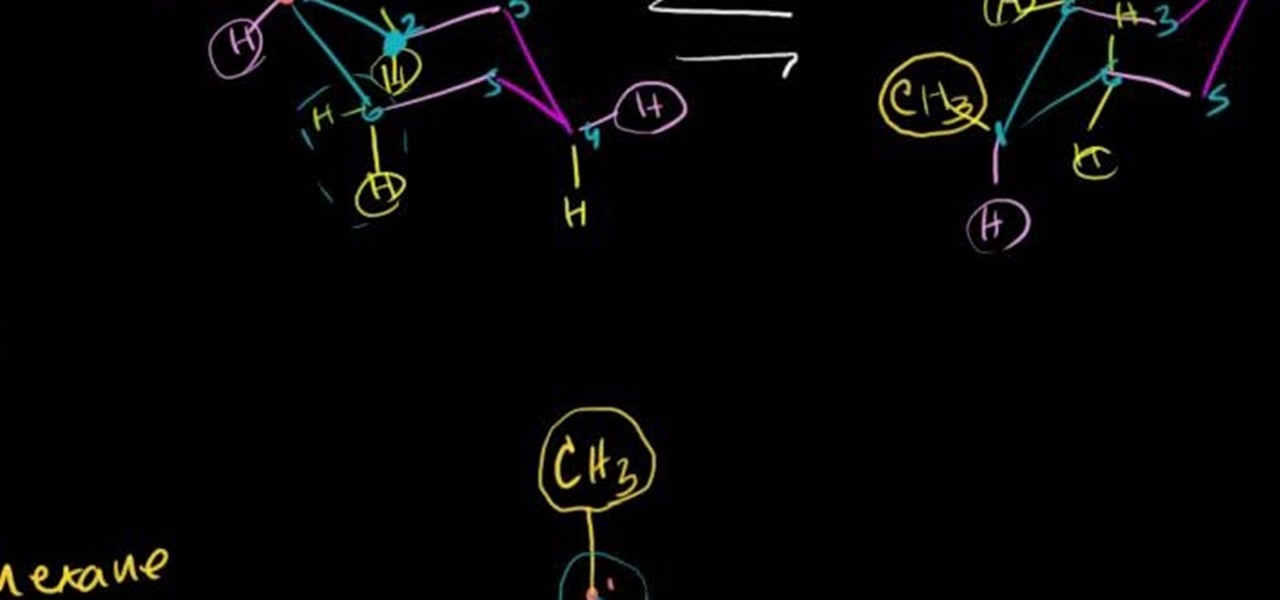
How To: Create a double Newman diagram for methcyclohexane in organic chemistry
In this free video science lesson from Internet pedagogical superstar Salman Khan, you'll learn how to create a double Newman diagram for methcyclohexane. Whether you need help studying for that next big test or could just use a hand finishing your homework, you're sure to be well served by this video lesson. For more information, including detailed, step-by-step instructions, take a look.

How To: Use and read Newman projections in organic chemistry
In this free video science lesson from Internet pedagogical superstar Salman Khan, you'll learn how to create and interpret Newman projections in organic chemistry. Whether you need help studying for that next big test or could just use a hand finishing your homework, you're sure to be well served by this video lesson. For more information, including detailed, step-by-step instructions, take a look.
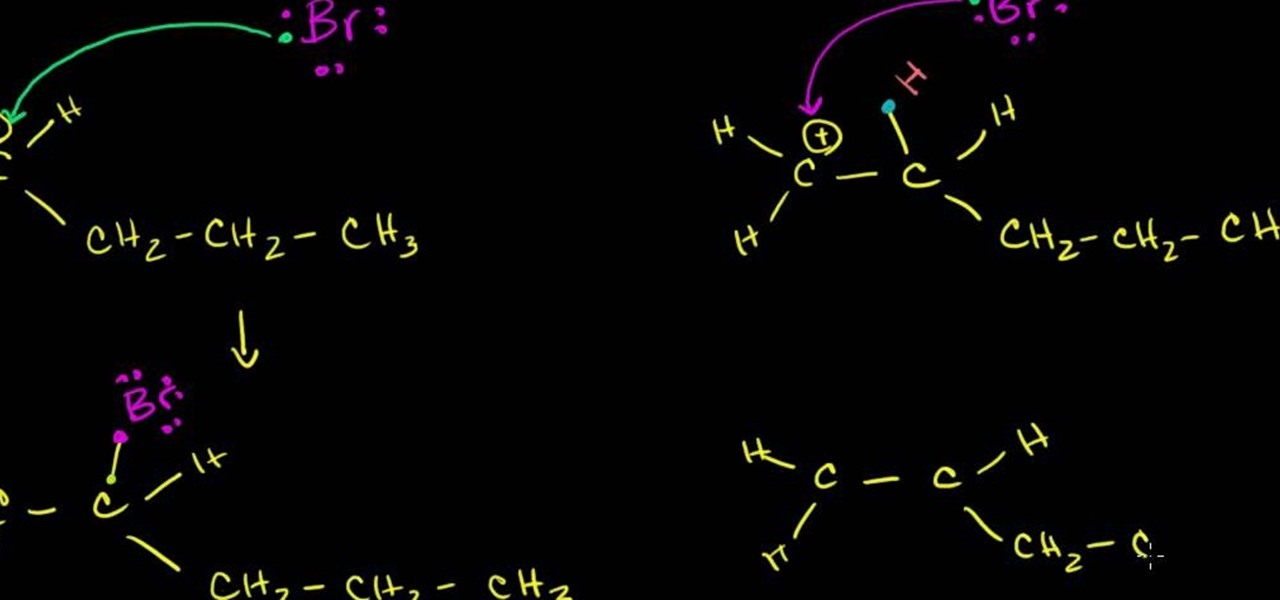
How To: Use Markovnikov's rule to determine the likelihood of an addition reaction
In this free video science lesson from Internet pedagogical superstar Salman Khan, you'll learn how to use Markovnikov's rule to figure out which addition reaction is most likely in organic chemistry. Whether you need help studying for that next big test or could just use a hand finishing your homework, you're sure to be well served by this video lesson. For more information, including detailed, step-by-step instructions, take a look.
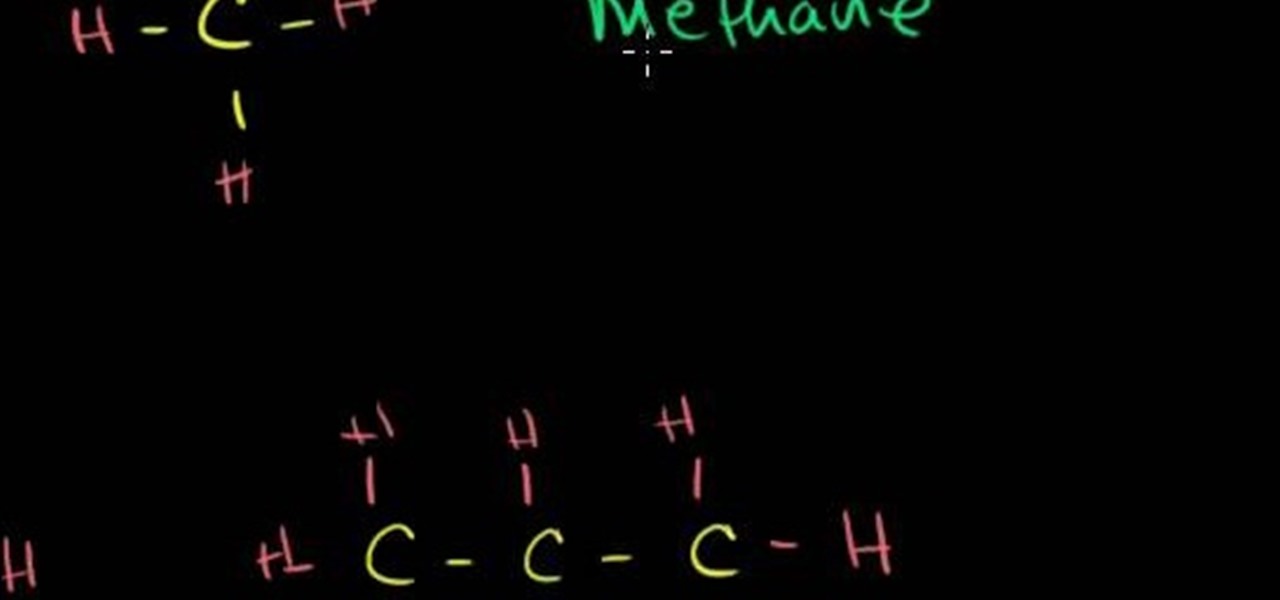
How To: Represent the structure of a molecule in organic chemistry
Need some help figuring out how to represent an organic molecule? You're in luck: In this free video science lesson from Internet pedagogical superstar Salman Khan, you'll learn how to just that. Whether you need help studying for that next big test or could just use a hand finishing your homework, you're sure to be well served by this video lesson. For more information, including detailed, step-by-step instructions, take a look.

How To: Name alkanes with alkyl groups in organic chemistry
What's in a name? Well, your chemistry grade, for one. In this free video science lesson from Internet pedagogical superstar Salman Khan, you'll learn how to name alkenes with alkyl groups. Whether you need help studying for that next big test or could just use a hand finishing your homework, you're sure to be well served by this video lesson. For more information, including detailed, step-by-step instructions, take a look.
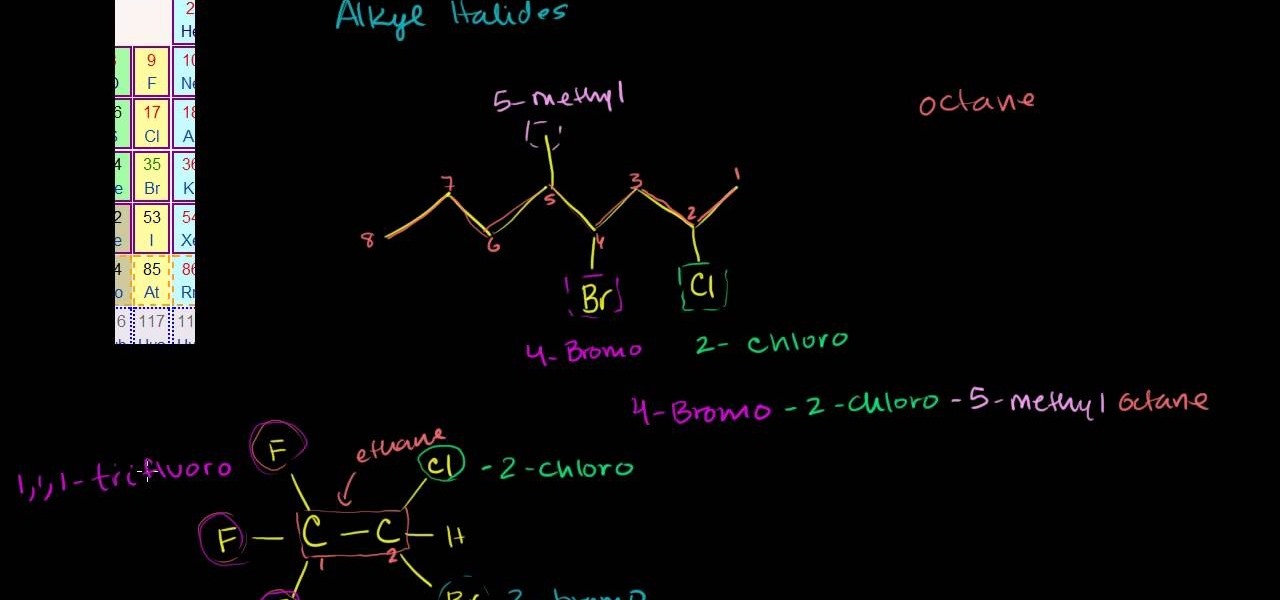
How To: Name an alkyl halide (or haloalkane) in organic chemistry
What's in a name? Well, your chemistry grade, for one. In this free video science lesson from Internet pedagogical superstar Salman Khan, you'll learn how to name alkyl halides. Whether you need help studying for that next big test or could just use a hand finishing your homework, you're sure to be well served by this video lesson. For more information, including detailed, step-by-step instructions, take a look.
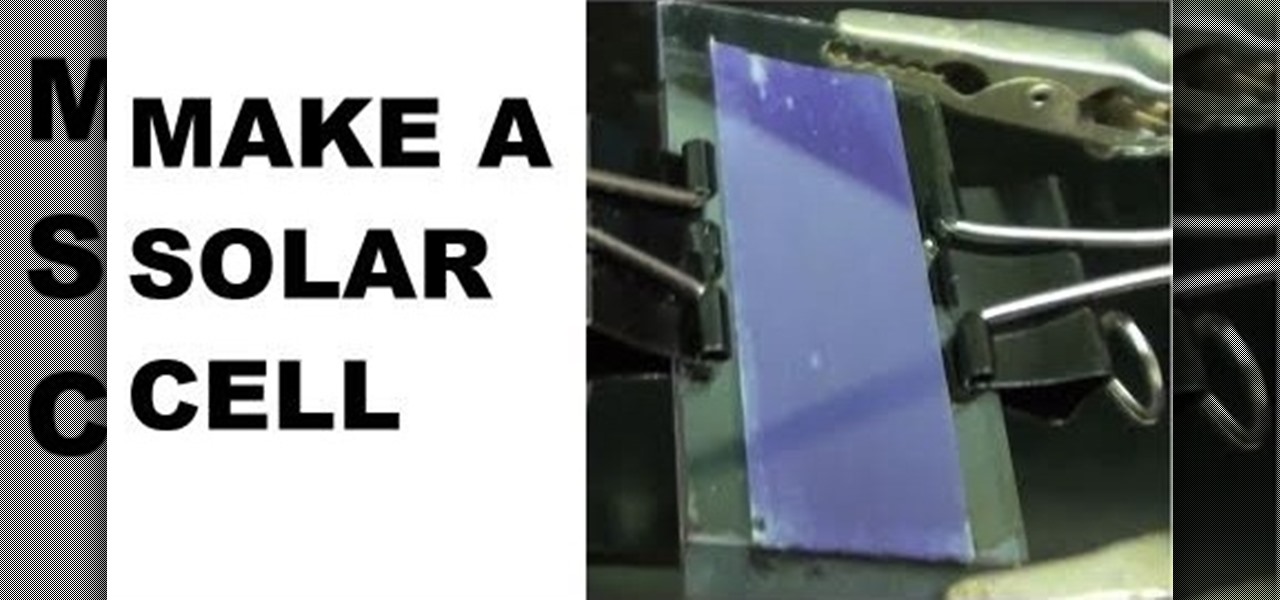
How To: Make a dye-sensitized solar cell with titanium dioxide and anthocyanin
Discover the power of raspberries! Literally. In this NurdRage science video, learn how some crushed raspberries and some titanium dioxide (TiO2) can create a powered dye-sensitized solar cell. Inside a raspberry is something called anthocyanin, which is a flavonoid pigment. Commercially purchased solar cells are way more powerful than this DIY solar cell, but with a little improvement, who knows. Nurd Rage also lets you know how this works.
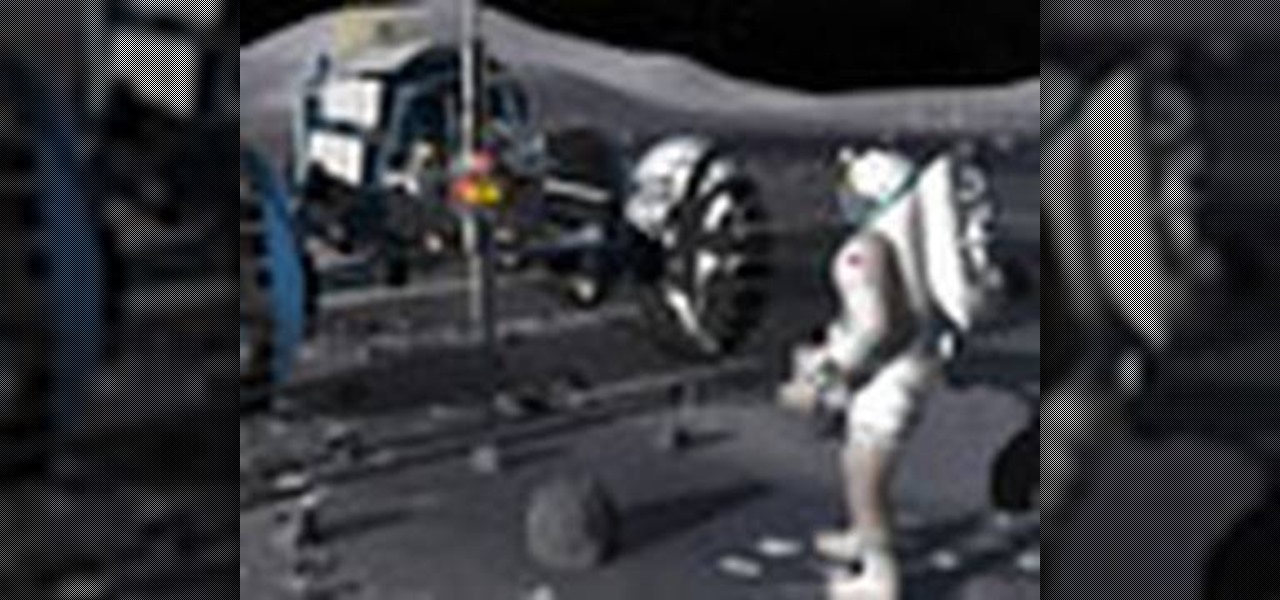
How To: Build your own lunar city model
In this tutorial, we learn how to build your own lunar city model. You will need: toilet paper tube, bottle caps, CDs, sheets, and scissors. Now, cover your table area with the bed sheet so it's completely covered. Now, star tot arrange your lunar city model. Place the CDs on the table and stack them, placing bottle caps in between. After this, cut the toilet paper rolls in half and lay them flat on the ground. After this, place cups lid down on the table and then add CDs on top of them. Now ...

How To: See part of the Milky Way Galaxy
In this video, we learn how to see part of the Milky Way Galaxy with Chris. You will need to be in a dark place at night and have a compass with you as well. Since you are inside of the Milky Way Galaxy, you will be able to see it easily! It's so bright you are able to see it at night without using a telescope. Take your compass and find the Northern sky with it at night in an open area. After this, look up and you will see the bright mass in the sky which is the Milky Way, enjoy!
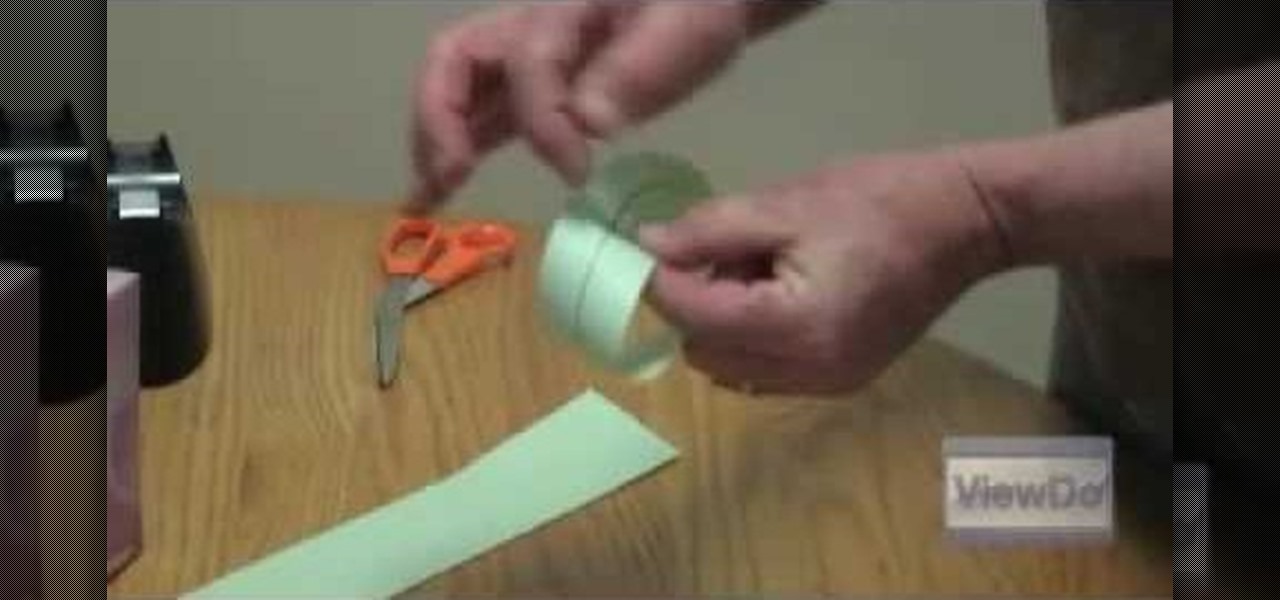
How To: Make a mobius loop or strip
This video will show you how to make a 2 dimensional object in a 3D world. A well-known example of this is a mobius strip, which can be made with a strip of paper, scissors, and some tape. After cutting out a long strip of paper, you should take the strip of paper, give it a half twist and tape it together, making a loop. This loop, or mobius strip, exists in a three dimensional world, where by following the loop, you seem to always arrive at the same point. Furthermore, the loop can by cut d...
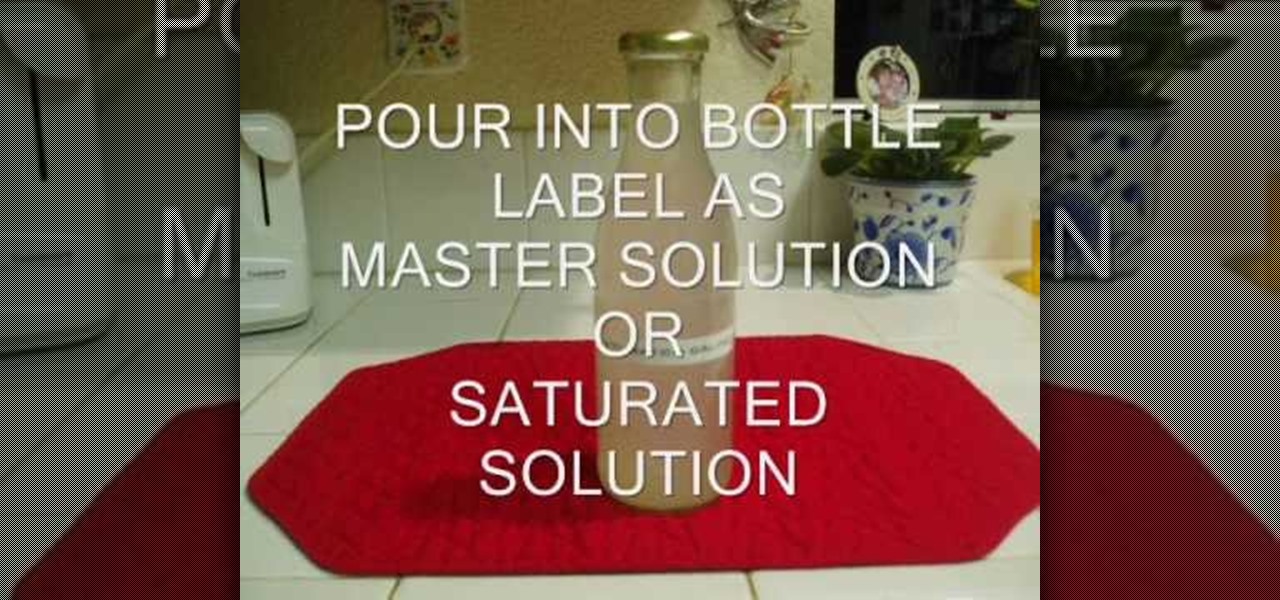
How To: Make saline (salt) or Lye (NaOH) solutions
You can make saline (salt) or lye (NaOH) solutions. So first you will have to arrange these things to do it which are 2 500ml bottles, 1/2 LB table salt, measuring cup, kitchen scale (optional) and pan for heating. Now first heat the



